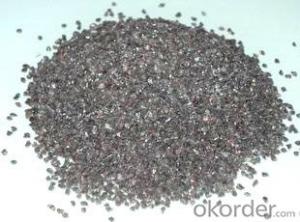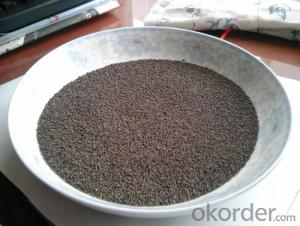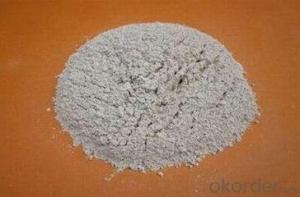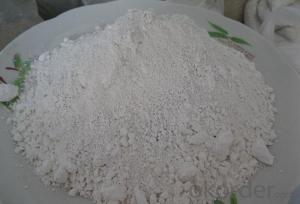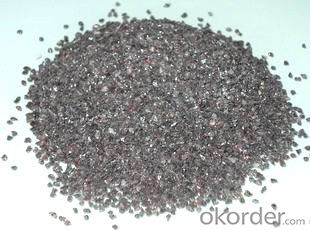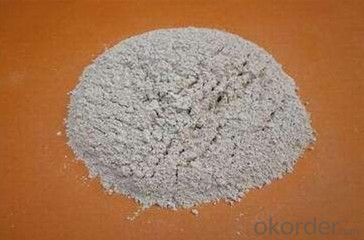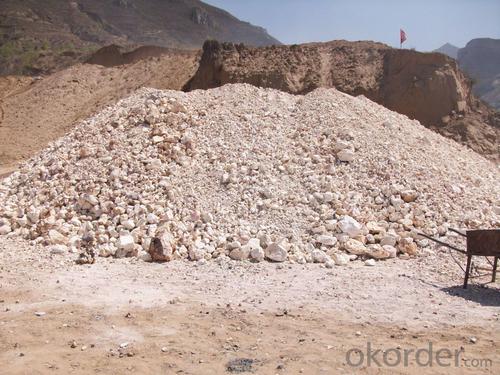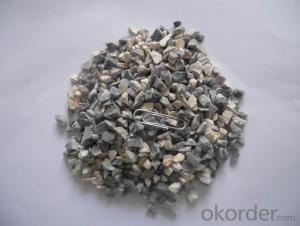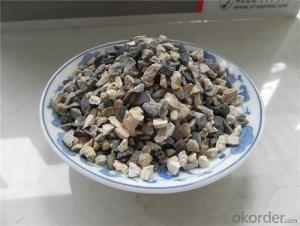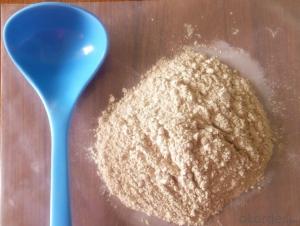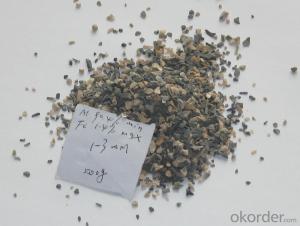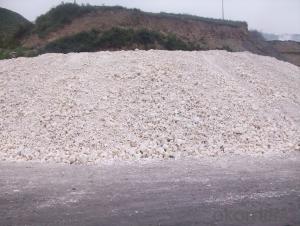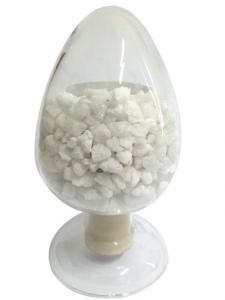Raw Materials for Refractory:86% Rotary/ Shaft/ Round Kiln Alumina Calcined Bauxite
- Loading Port:
- Tianjin
- Payment Terms:
- TT OR LC
- Min Order Qty:
- 25 m.t.
- Supply Capability:
- 3000 m.t./month
OKorder Service Pledge
OKorder Financial Service
You Might Also Like
86% Rotary/ Shaft/ Round Kiln Alumina Calcined Bauxite Raw Material for Refractory
Specifications
1. We directly supply calcined bauxite
2. Al2O3:70%/75%/80%/85%/86%/88%/90%
3. Size:0-1-3-5-8-10/200mesh/325mesh/400mesh/500mesh
Calcined bauxite
AL2O3:70% min.
FE2O3:2% max.
SIZE: 1-5MM 90% min.
china calcined bauxite manufacturer since 1999
purity of al2o3 75%-90%
rotary kiln calcined bauxite
self-owned bauxite mines
Size:
Lumps /Grains:0-1mm,1-3mm,3-5mm,5-8mm /Powders:100mesh, 200mesh,325mesh
Product Description
Produce name, Calcined bauxite,bauxite,sintered bauxite,Round kiln calcined bauxite
Sepcification ,
AL2O3 88%min
Fe2O3 2.5%max
SiO2 6%max
TiO2 4%max
CaO+MgO 0.5%max
R2O 0.5%max
Moisture Absorption 3% max
Bulk Density 3.20g/cm3 min
Size,200mesh,325mesh,100mesh,0-1mm,1-3mm,3-5mm and 5-8mm
Usage of Calcined bauxite
1.Aluminium industry.
2.Precision casting.
3.Refractory industry.
4.Silicic acid aluminium firefibre
5.Mixed with magnesium oxide,it can be an nice bonding agent,especially for pouring entire steel teeming ladle lining
6.Manufacture bauxite cement,grinding abrasives.ceracmic industry,and chemical industry for making aluminium compounds
Calcined Bauxite Grade:
Shaft Kiln Bauxite
Rotarty Kiln Bauxite
Round Kiln Bauxite
Packaging & Delivery
Packaging Details: In bulk or in 1-1.25mr bag
Product Pictures:
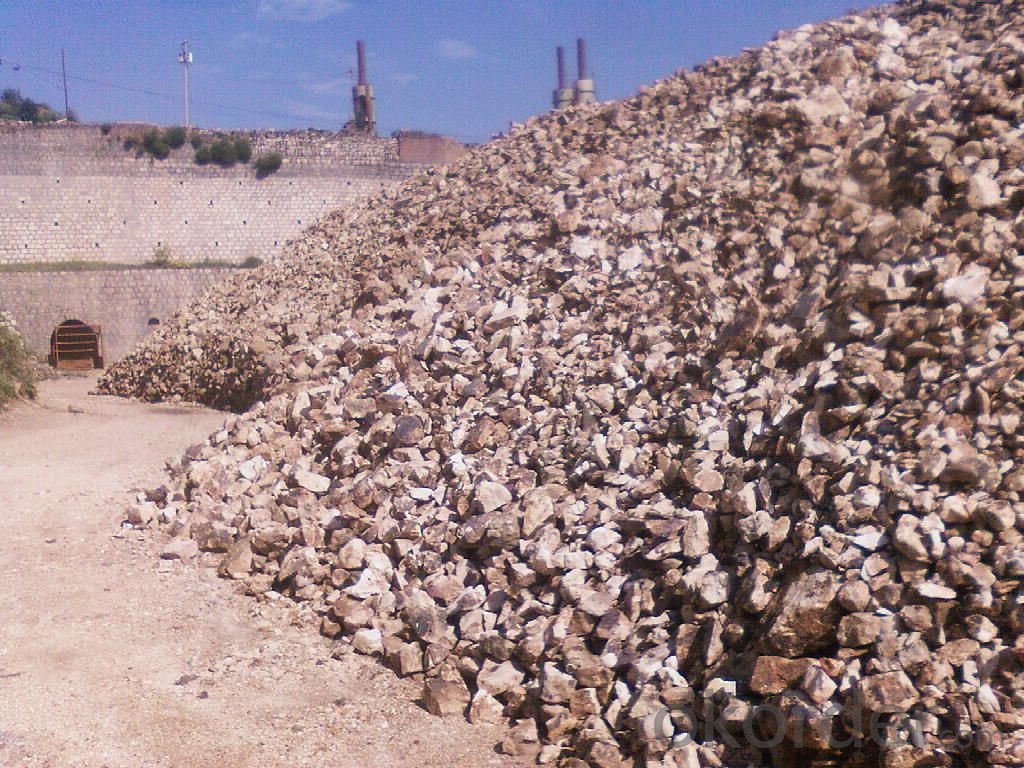
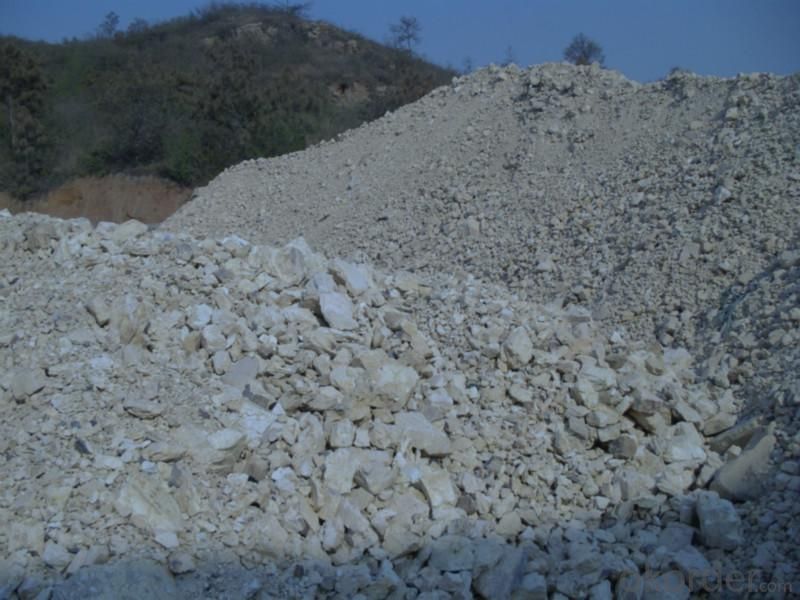
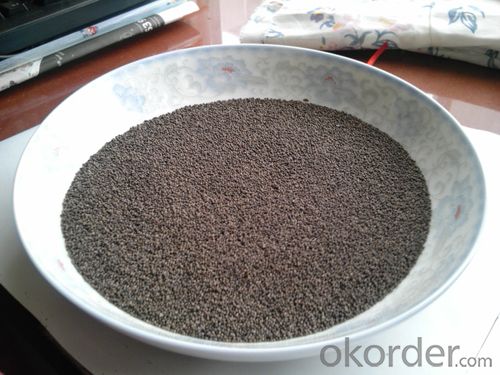

Our Service:
1. Your inquiry related to our products or prices will be replied in 24hours.
2. Manufacturer with large capacity, ensure the fast production cycle after confirmed the order.
3. Our professional technicians will answer your entire enquiry in patient.
4. To meet the refractory solutions, we can serve as your instructions.
5. Protection of sales area and private information for our entire customer.
If you’ve kind enquiries, please don’t hesitate to let us know. ^_^
- Q: what is the grading standards of external wall thermal insulation materials?
- What is the grading standards of external wall thermal insulation materials? summarizing the three versions of GB8624 (1997,2006,2011) external wall insulation fire rating can be basically divided into: A1, A2, B1, B2, B3 and other levels. the dividing is based on many technical indicators. It takes time to explain for It is professional and technical. For details, please contact Qingdao Shan Textile Instrument. they specialized in external wall insulation fire rating tester.
- Q: How to distinguish the fire?rating of rubber and plastic thermal insulation material?
- Fire?rating grading of external wall thermal insulation materials. 1, China's national standard GB8624-97 divides the combustion performance of building materials external insulation materials into the following grade. Level A: Incombustible materials: Almost no burning materials. Level B1: Incombustible materials: Flame-like material has good fire-retardant effect. In case of fire in the air or at high temperature, it is difficult to fire and doesn't spread quickly, and when the fire source is removed after combustion, it stops immediately. Level B2: Incombustible materials: Combustible materials have a certain flame resistance. In case of fire in the air or at high temperature, it will immediately burst into flames, and easily leads to the spread of fire, such as poles, wooden frame, wooden beams and wooden stairs,ect. Level B3 : Incombustible materials: No flame-retardant effect, hidhly flammable and high fire risk. 2, The external wall thermal insulation materials could be divided according to the fire?rating. 1) thermal insulation material that has the level A combustion performance: Spraying inorganic fiber, glass wool, foam glass, ceramic foam, rock wool, foam cement and perlite obturator, and so on. 2), The thermal insulation material that has level B1 combustion performance: Special processed extruded polystyrene board (XPS) / special processed polyurethane (PU), phenolic and polystyrene powder. 3), Thermal insulation materials that have level B2 combustion performance: Molded polystyrene board (EPS), extruded polystyrene board (XPS), polyurethane (PU) and polyethylene (PE), etc. The information given is for reference only. Hope it will help you.
- Q: I wanna ask you, which level is b1 fireproof and thermal inuslation matertial ??
- which level is b1 fireproof and thermal inuslation matertial: I soppose you mean rubber and plastic! Only rubber and plastic has b1b2 level. Level b1 is the fireproofing level b1, because the rubber and plastic does not belong to the fireproofing material. It only has fire?retardant. The wholesale of all kinds of thermal insulation material and construction needs to look at the name.
- Q: Which industry does the metallurgy and thermal insulating and refractory material belong to?
- According to "New Economic Industrial Classification", the metallurgy and the thermal insulation refractory matter belong to C category. The manufacturing industry has 30 categories. The non-metallic mineral products industry has 303 classes. The production of building materials of tiles, stones, ect. refers to clay, ceramic tile production, building stone processing, building materials produced by wastes or drogs and subcategories 3035 produced by other building materials. The manufacture of thermal and acoustic insulation materials refers to the manufactuer of mineral insulation materials and other products, like rock wool, mineral?cotton, expanded perlite and expanded vermiculite used for thermal insulation and sound insulation, but it does not include the production of 3039 subcategories, like asbestos thermal insulation and sound insulation materials, and other construction materials.
- Q: How long is the fire-resistant time of fireproof wooden door?
- fire endurance class A (1.5 hours), class B (1.0 hours), class C (0.5 hours).
- Q: What kind of foundry ingot refractory materials are there? Please be more detailed.
- Classification of refractory materials used in foundry smelting process: refractory brick, siliceous brick, high alumina brick, corundum brick, magnesia brick, magnesia brick, magnesia carbon brick. Unshaped refractory materials: ramming material, castable, refractory cement, silica, magnesia, etc.
- Q: The performance of refractory material
- The mechanical properties of refractory material include withstand voltage strength. The structure properties of the refractory materials include porosity, bulk density, such as thermal emission rate. The physical properties of the refractory materials include temperature conductivity structure performance, wear resistance, hiphotos, electrical conductivity, creep, the hydration resistance, adhesive strength.
- Q: What refractories can withstand high temperature above 2100 degrees?
- Well, what can you heat to 2100 degrees? ? The dryer? What you used are all substance of low-melting point, which cannot withstand even 1000 degrees. "Is the maximum temperature of refractory bricks 1500 degrees?" Do you mean refractoriness or operating temperature? Firstly, a dryer is impossible to reach 2100 degree. If it does, you might as well use high chrome brick for oxidizing atmosphere. You can use silicon?nitride brick for non-oxidizing atmosphere. But I guess it is enough for you to use clay brick, but the price differs a lot! ! !
- Q: What's the fire resistance rating of the exterior fire?retardant?coating?
- First of all, fire retardant coating has no class distinctions. Buildings fire resistance rating is generally classified as follows: I grade fire resistance, II grade fire resistance, III grade fire resistance, IIII grade fire resistance. Buildings with I grade and II grade fire resistance are much common. According to the coating thickness, exterior fire-resistant coating for steel structure can be classified as follows: 1. Exterior thin fire-resistant coating for steel structure, 2. Exterior ultra-thin fire-resistant coating for steel structure, 3. Exterior thick fire-resistant coating for steel structure.
- Q: Does anyone know the fire endurance of steel stud partition?
- Indeed ① Dragon Brand gypsum board fire-resistant partition: Its fireproofing extreme time is 4 hours, suitable for firewalls of a variety of public buildings, public exit passageway and other partitions, which meets the first level of fire protection standard ② fireproofing and pressure-resistant partition: Refers to the partition which can withstand momentary gas shocks of over 1200pa , mianly used for the room partition with inert gas fire-fighting needs, such as equipment rooms. The pressure-resistant degree of fireproofing and pressure-resistant partition of Beixin Building Materials can be up to 4800Pa, especially suitable for high-rise fireproofing.
Send your message to us
Raw Materials for Refractory:86% Rotary/ Shaft/ Round Kiln Alumina Calcined Bauxite
- Loading Port:
- Tianjin
- Payment Terms:
- TT OR LC
- Min Order Qty:
- 25 m.t.
- Supply Capability:
- 3000 m.t./month
OKorder Service Pledge
OKorder Financial Service
Similar products
Hot products
Hot Searches
Related keywords
